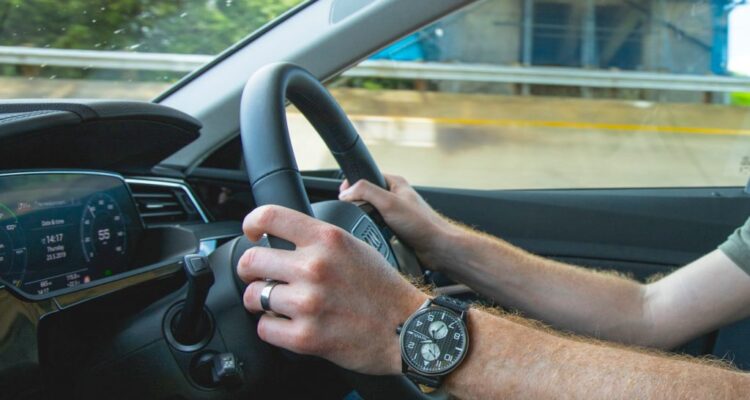In the bustling landscape of modern transportation, ridesharing services have revolutionized the way we move from point A to point B. With just a few taps on a smartphone, we summon a driver to whisk us away to our destination.
It’s convenient, it’s efficient, and it’s become an integral part of many people’s daily lives. Yet, amid the convenience lies a sobering reality: the potential dangers of ridesharing accidents.
In this post, we’ll explore the complexities of holding ridesharing companies accountable after an accident, shedding light on the shared responsibility model, exploring legal options, and offering actionable tips for protecting your rights.
Understanding Ridesharing Insurance
When it comes to ridesharing accidents, determining liability can be a nuanced affair.
Ridesharing companies operate under a shared responsibility model, where liability shifts depending on the stage of the ride. Let’s break it down:
During times when the driver is logged out of the ridesharing app, the driver’s personal insurance typically applies. This means that if an accident occurs while the driver is off-duty, the driver’s personal insurance would likely be responsible for covering any damages.
Once the driver logs into the app and is available to accept rides, but has not yet picked up a passenger, ridesharing companies often provide contingent liability coverage. This coverage typically kicks in if the driver’s personal insurance does not fully cover the damages. It’s important to note that this coverage may have limits and conditions.
Finally, when a passenger is on board, the ridesharing company’s insurance policy usually applies. This coverage is intended to protect both the driver and the passenger in the event of an accident during the ride.
According to the Chicago rideshare accident attorneys at TPMB, understanding these insurance coverage phases is crucial for determining who may be held accountable in the event of a ridesharing accident.
When the Ridesharing Company Should Be Held Accountable
While ridesharing drivers play a central role in the safety of passengers, there are instances where the ridesharing company itself may bear responsibility for accidents. Here are three key scenarios where the ridesharing company should be held accountable:
Driver Negligence During Active Ride
In cases where a ridesharing driver exhibits negligence while actively providing a ride, the ridesharing company may be held liable. This includes situations where the driver engages in reckless driving, is distracted behind the wheel, or fails to properly maintain their vehicle.
Passenger safety is paramount, and the ridesharing company has a duty to ensure that their drivers adhere to safety standards.
Background Checks and Driver Screening
Ridesharing companies are responsible for conducting thorough background checks and screening processes for their drivers.
If a ridesharing company fails to adequately vet its drivers and hires individuals with a history of unsafe driving or criminal behavior, they may be held accountable for any accidents caused by these drivers. Ensuring passenger safety starts with proper driver screening procedures.
Algorithmic Issues and Technology Failures
Ridesharing companies rely heavily on technology to match drivers with passengers and facilitate rides. However, technological malfunctions or algorithmic errors can sometimes contribute to accidents.
If a ridesharing company’s app or technology fails in a way that leads to an accident, the company may be held responsible for the resulting damages. It’s essential for ridesharing companies to regularly assess and maintain their technology to prevent such incidents.
In these scenarios, holding ridesharing companies accountable is crucial for promoting passenger safety and ensuring that they uphold their duty of care to their customers.

Protecting Your Rights After a Ridesharing Accident
In the aftermath of a ridesharing accident, safeguarding your rights and well-being is paramount. Here are actionable steps to take to protect yourself and ensure you receive the support and compensation you deserve:
Seek Medical Attention
Regardless of the severity of your injuries, seeking medical attention should be your top priority. Prompt medical care not only ensures your health and safety but also creates a record of your injuries, which can be crucial for any potential legal claims.
Gather Evidence
Collecting evidence at the accident scene is crucial for building a strong case. If you’re physically able to do so, gather information such as the driver’s name and contact details, license plate number, and insurance information.
Take photos of the accident scene, including vehicle damage, road conditions, and any relevant signage. Additionally, obtain contact information from any witnesses who may have observed the accident.
Report the Accident to the Ridesharing Company
It’s important to report the accident to the ridesharing company as soon as possible, following their guidelines for reporting accidents. This not only ensures that the company is aware of the incident but also creates a formal record of the event.
Here are the links to report an accident for Uber & Lyft:
- Uber: https://inquiries.uber.com/
- Lyft: https://www.lyft.com/arow
Be sure to provide accurate and detailed information about the accident when reporting it to the company.
Exploring Your Legal Options
After a ridesharing accident, exploring your legal options is essential to ensure that you receive the compensation you deserve for your injuries and losses. Here are the key legal avenues to consider:
Consulting a Personal Injury Lawyer
One of the most important steps you can take after a ridesharing accident is to consult with a personal injury lawyer who specializes in handling ridesharing cases. A knowledgeable attorney can assess the circumstances of your accident, advise you on your rights, and guide you through the legal process.
Filing a Lawsuit
In some cases, filing a lawsuit against the ridesharing company may be necessary to recover damages for your injuries and losses. This could be appropriate if the ridesharing company’s negligence or misconduct contributed to the accident, such as inadequate driver screening procedures or defective technology.
It’s important to note that each ridesharing accident case is unique, and the legal options available to you will depend on the specific circumstances of your accident.
Promoting Safety and Accountability in Ridesharing
In conclusion, ridesharing has undoubtedly transformed the way we travel, offering convenience and accessibility to millions of people worldwide. However, with this convenience comes the responsibility of ensuring passenger safety and holding ridesharing companies accountable for their actions.
As passengers, we have the right to expect safe and reliable transportation services. By advocating for our rights, seeking legal recourse when necessary, and supporting initiatives that promote safety and accountability, we can work together to ensure that ridesharing remains a safe and viable transportation option for all.






